Feature Story
Challenges of Young Researchers
Round table discussions in pursuit of the challenges set in the Fourth Mid-to-long-term Plan
Integrated simulation technology
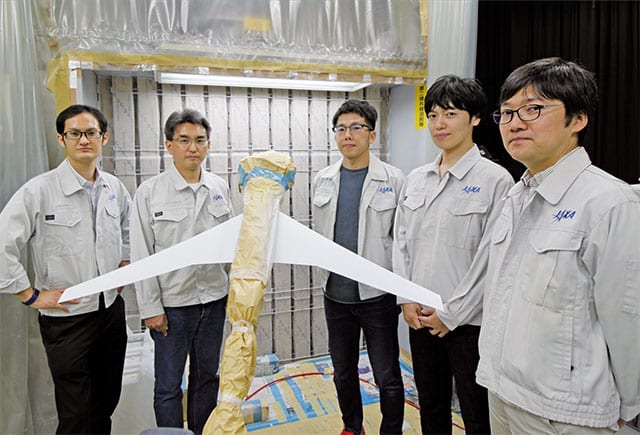
Tackling simulation of off-design flight conditions
Nakakita: JAXA is developing an Integrated Simulation System of Aerospace vehiCles (ISSAC) to better address complex and multi-physics problems we face in designing and developing aircraft. ISSAC is a precursor to replace conventional aircraft design to a virtual-based one, which is verified by ground and flight test data. We can move one step closer to realizing virtual airframe design after we succeed to construct ISSAC. Our current focuses are on areas such as buffet, flutter, and water spray, and each area of research is pursued by a mixed group of experts specializing in computation and experimentation.
Tsushima: I’ve worked on aeroelastic stability analysis focusing on flutter. Flutter is a phenomenon involving fluid-structure interaction, which sometimes leads to critical aircraft incidents. Therefore, evaluations of aeroelastic instability (flutter) play an important role in the design of an aircraft to ensure its safety. Flutter characteristics can be evaluated by wind tunnel experiments with wing models. These wing models must satisfy strict requirements in terms of structural and aeroelastic characteristics avoiding structural failure and producing flutter in the wind tunnel test environment. Due to the strict requirements, flutter wing models tend to be costly. The significant costs involved limit most observations to just below a flutter onset condition so that we don’t end up breaking the expensive models. So, my role in ISSAC is to establish a design and manufacturing technique for cost-efficient wing models by using additive manufacturing technology, which allows us to break as many models as we need to without worrying about costs.
Ishida: I’m studying buffet. This phenomenon causes vibration in an airframe through the effect of turbulent airflow on its surface under certain conditions. I’m trying to understand this phenomenon and find a way to control it. Although buffet rarely occurs under normal flight conditions, we won’t be able to do a complete simulation without resolving it.
Kubota: When landing or taking off on a heavy rainy day, water spray generated by a tire of an aircraft running on a flooded runway may negatively affect the airframe or engines. I’m working on numerical analysis for predicting that impact. While all aircraft must have the impact of water spray evaluated before they can be put on the market, very few manufacturers have published articles on this topic. Since this is an exploratory research, I was surprised, to be honest, when it was chosen as one of the themes for ISSAC. But I was grateful for the opportunity, and I work at it applying analysis methods used in other research.
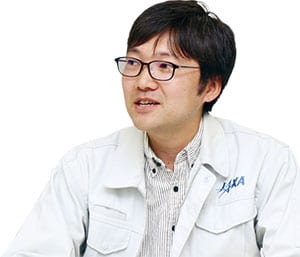
“I will use new fluid analysis technology most manufacturers have never seen in aircraft development”
KUBOTA Kenichi
Researcher, Numerical Simulation Research Unit
Koga: I started working on water spray research with Kubota, and now I’m feeling the pressure to obtain high-accuracy verification data that is vital for developing the analysis tool. We need to clarify the type of experiment data by coordinating between numerical analysis and experiment. Kubota and I joined JAXA the same year, so I think we’re working pretty well together.
Joy of exchanging ideas with people with different specialties
Nakakita: A key to the success of ISSAC is coordination with different specialties, such as computational and experimental fluid dynamics. What do you find particularly enjoyable and fulfilling about working on this project?
Ishida: I started participating in wind tunnel experiments after joining JAXA, and I learned firsthand how hard it is to obtain experiment data needed to verify numerical simulations. I now have a clearer idea of what data can be obtained and what can’t, so I guess I’m getting familiar with the point of view of experimental fluid dynamics.
Kubota: The water spray research has been a ground-up effort, too. We work closely with the experiment team, starting from constructing experimental setups, and we’ve engaged in repeated discussions on what kind of data we can obtain.
Koga: I get new insights by communicating with people from different teams. Right now, our water spray research is going through a process of trial and error. We bring all kinds of idea to the table, and it is a real joy when an experiment goes well.
Tsushima: I specialize in aeroelasticity, which has not been actively studied in Japanese research community. I hope that my works will ignite aeroelastic research activities in Japan. Through the works, I can experience developments not only in aerodynamics but also in structures, which is pretty exciting. I also find it rewarding that my work contributes directly to developments of future aircraft.
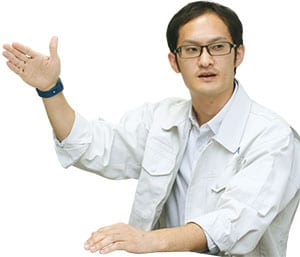
“I would like to establish a novel approach for aerospace developments with aeroelastic design techniques, which has not been actively studied. ”
TSUSHIMA Natsuki
Researcher, Structures and Advanced Composite Research Unit
Ishida: Since I do numerical simulations, I’m grateful for the access to JAXA’s wealth of computer assets, such as the JAXA Supercomputer System (JSS) , and all the reference data it has. Buffet analysis is a challenging theme, even from an international perspective, and I see it as a major priority for JAXA’s numerical simulation research unit. It’s a great joy to be able to work on unraveling the buffet phenomenon harnessing the know-how cultivated by JAXA.

Visualization of the mechanism of buffet occurring on an aircraft wing
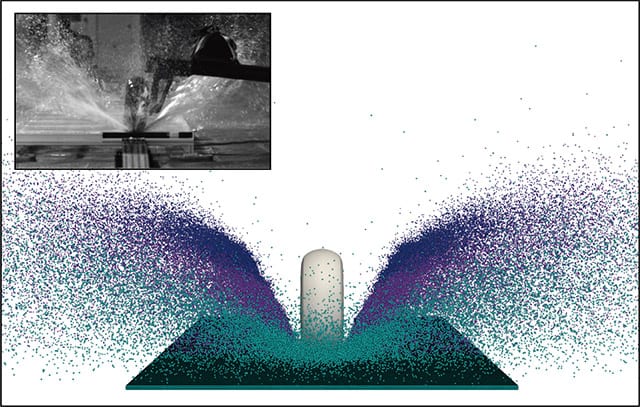
Comparison of a water spray generated by an aircraft tire in a running test (upper-left corner of the figure) and its numerical simulation
Developing methods and tools that help the aviation industry advance
Nakakita: We might see entirely new technologies come out of multidisciplinary integration and interdisciplinary collaboration.
Tsushima: When I was in the US, I felt aircraft were something more accessible. Even students had an opportunity to engage in collaborative research with leading manufacturers, which led to the development of actual aircraft. In Japan, you don’t see many opportunities like that. As an aerospace researcher, I’ve always dreamed of an opportunity to engage in work that contributes to the development of better aircraft. I would also like to contribute to Japanese aerospace industries to enhance their development capabilities. Being involved in ISSAC, I feel that I have been really committed to what I want to. In my future works, I’d like to find a new method that can handle more sophisticated designs by combining aeroelastic techniques and additive manufacturing technology.
Ishida: Currently, it can take a couple of weeks to complete a numerical simulation of buffet for FaSTAR , a high-speed fluid analysis program, using JSS. I’m thinking of developing a new method that will reduce the calculation time, a superior, easy-to-use tool that people will find indispensable, even outside ISSAC. I want to make something that will become an enabler for aircraft manufacturers, and a testament to JAXA’s technological prowess.

“I want to create an indispensable tool for developers at manufacturers”
ISHIDA Takashi
Researcher, Numerical Simulation Research Unit
Koga: ISSAC has given me an opportunity to see the great potential of multidisciplinary integrated research. By interacting with experts in various fields, I can broaden my horizons and develop a multifaceted perspective, which feed directly into my own research. In the future, I’d like to work on hypersonic aircraft that can connect the earth and space, which was my research theme at university.
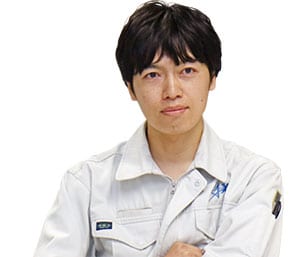
“ISSAC has given me an opportunity to see the great potential of doing research with multidisciplinary integration”
KOGA Seigo
Researcher, Aerodynamics Research Unit
Kubota: I think there are quite a few areas that are vital in placing aircraft on the market but that manufacturers find it difficult to spend a lot of money on, like water spray. Since JAXA is an aerospace research agency, I’d like to support the advancement of the aviation industry through achievements in those areas. It would be even greater if we could contribute something that can be applied beyond the aviation field, like behavior analysis of liquid fuel for reusable launch vehicles.
Nakakita: I look forward to seeing integrated simulation advance, propelled by the members’ strong commitment, and produce results exceeding ISSAC’s initial plans.
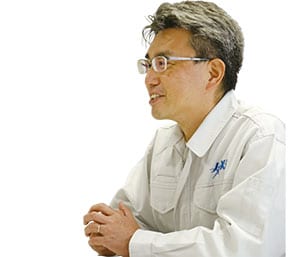
“I hope the members’ strong commitment will lead to results exceeding ISSAC’s initial plans”
NAKAKITA Kazuyuki
Manager for Advanced Aerodynamic Technology Section
Aerodynamics Research Unit
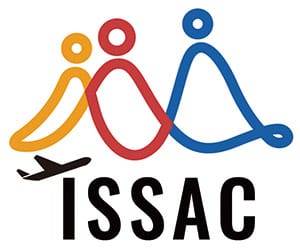
“ISSAC’s logo (shown on the right) symbolizes ‘integration built on diversity,’ with the three colors representing diverse human resources with different expertise cooperating hand in hand. It’s great to see young researchers with diverse capabilities exchanging their ideas for ISSAC, embodying its philosophy in their day-to-day activities.”
AOYAMA Takashi
Director, Numerical Simulation Research Unit
Feature Story
Challenges of Young Researchers
Comments are closed.